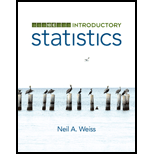
Concept explainers
Home Sale Prices. Refer to Example B.18 on page B-67, regarding the relationship between the sale price of a home and its size in square feet. In that example, we used the presence/absence of a swimming pool as a qualitative predictor variable. Here we consider using the type of roof on the home as a predictor variable. The homes in this data set have either a tile roof or a non-tile roof. The data for the 88 homes are in the table on page B-89.
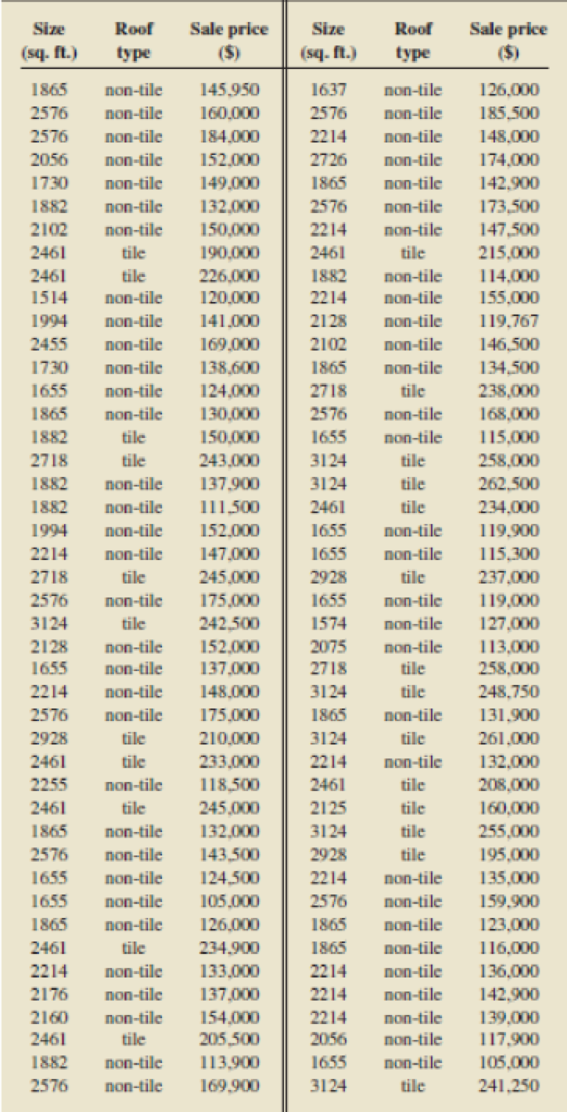
We introduced the indicator variable roof defined by
Roof =
- a. Output B.52 on page B-90 shows a plot of price versus size, with the plot symbol being a solid black circle for homes having a non-tile roof. Based on this plot does it appear that roof is a useful predictor variable? Explain your answer.
- b. We obtained the
regression analysis of price on size and roof shown in Output B.53 on page B-90. Conduct the t-tests for the individual utility of the two predictor variables at the 5% level of significance. Interpret your results. - c. Based on Output B.53, obtain the individual regression equations relating price to size for homes having tile roofs and for homes having non-tile roofs.
- d. Outputs B.54(a)–(d) on page B-91 provide plots of residuals versus fitted values, residuals versus size, residuals versus roof, and a normal probability plot of residuals, respectively. Perform a residual analysis to assess the appropriateness of the regression equation, constancy of the conditional standard deviations, and normality of the conditional distributions. Check for outliers and influential observations.
- e. Output B.55 on page B-91 provides a plot of price versus size with the regression lines for homes with tile roofs and with non-tile roofs. Based on this output and your residual analysis in part (d), do you feel that this model fits the data well? Explain your answer.
- f. To check for possible interaction between the two predictor variables, we obtained the regression analysis of price on size, roof and roof size. The output is in Output B.56 on page B-92. Is there an interaction between size and roof that is, is the cross-product term roof-size a useful predictor variable in the regression equation that also contains size and roof? Use α = 0.05.
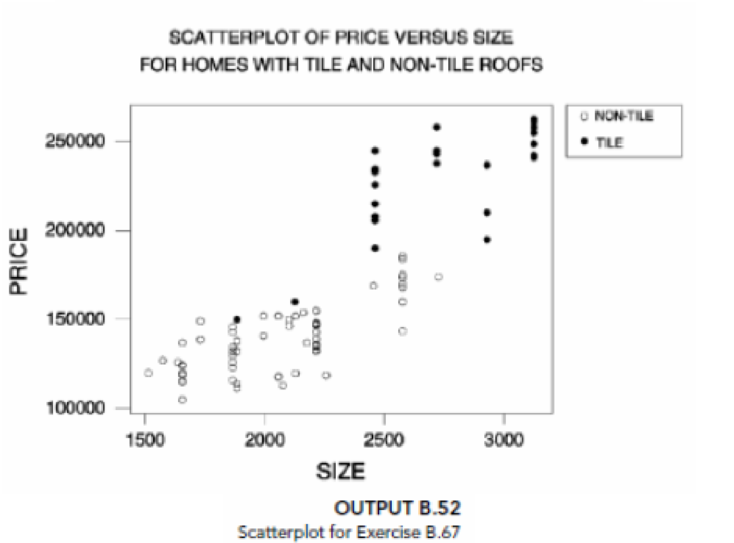
Regression Analysis: PRICE versus SIXE, ROOF
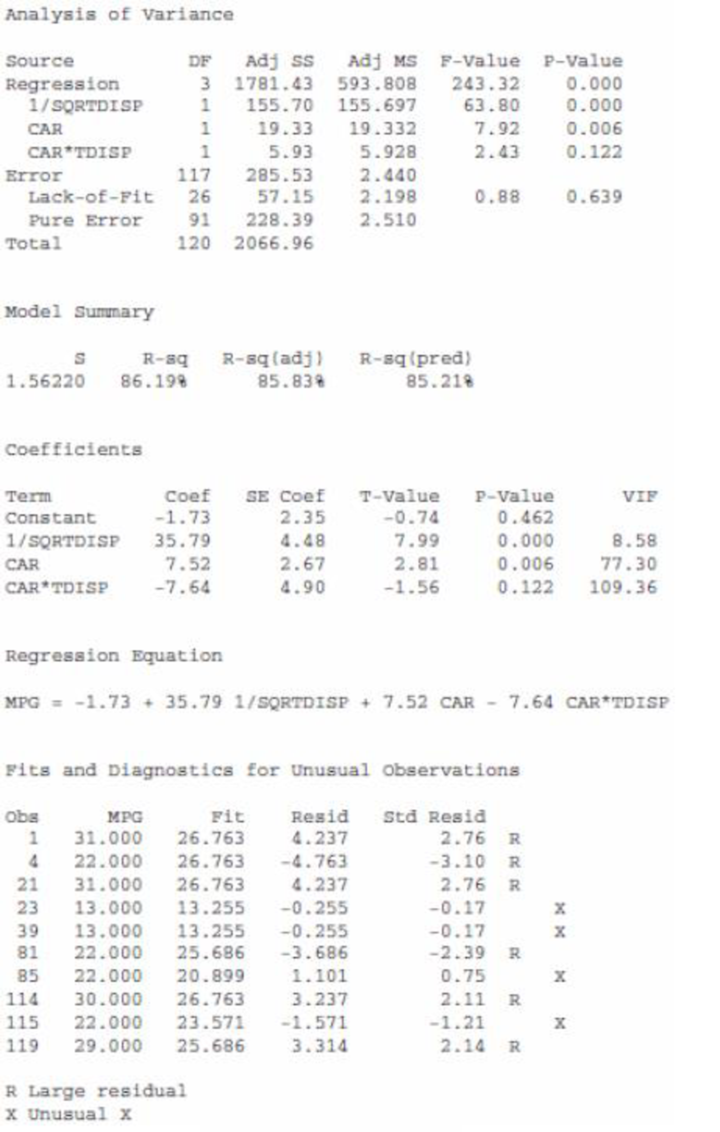
OUTPUT B.53
Regression output for Exercise B.67
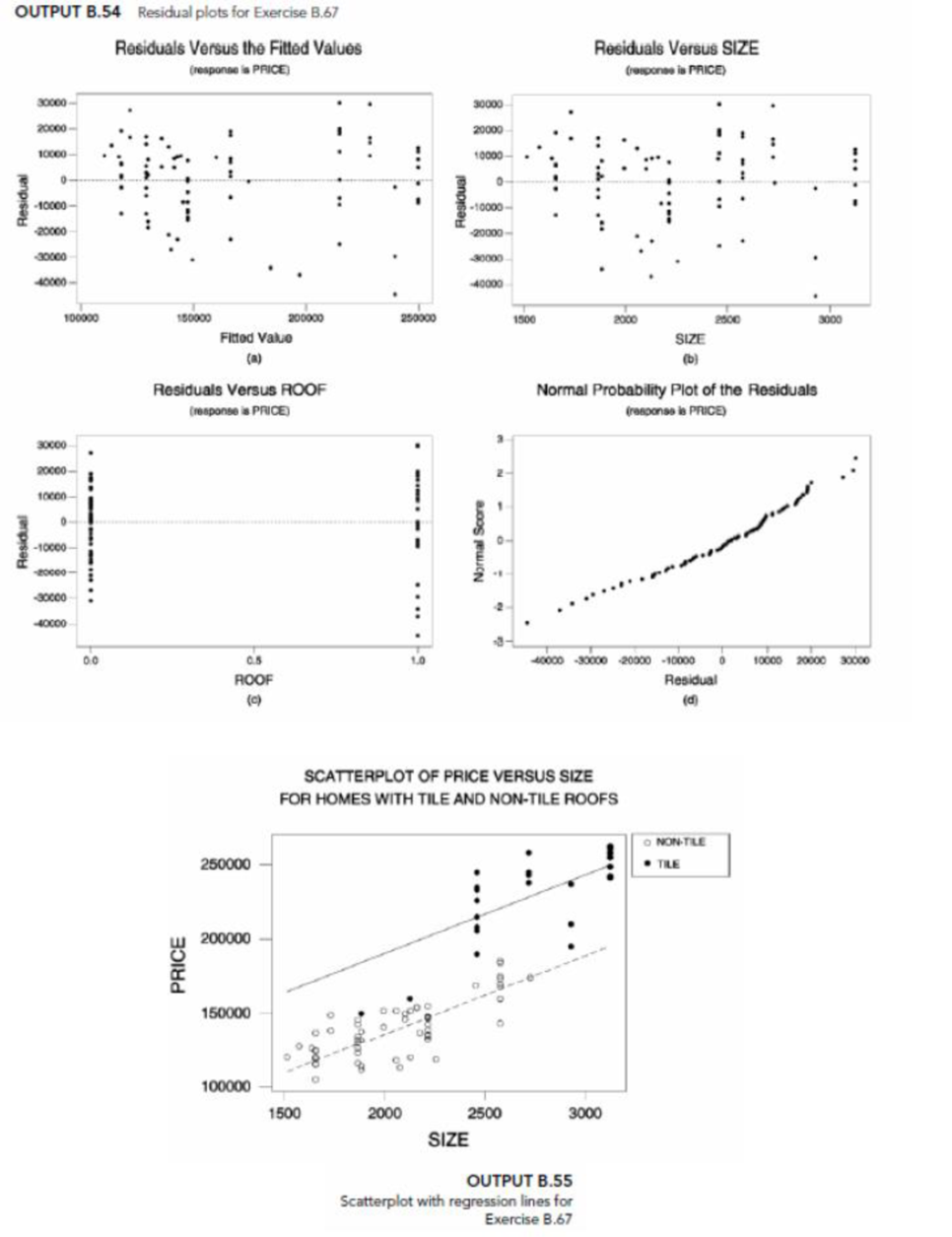
OUTPUT B.56 Regression output for Exercise B.67
Regression Analysis: PRICE versus SIZE, ROOF, ROOF*SIZE
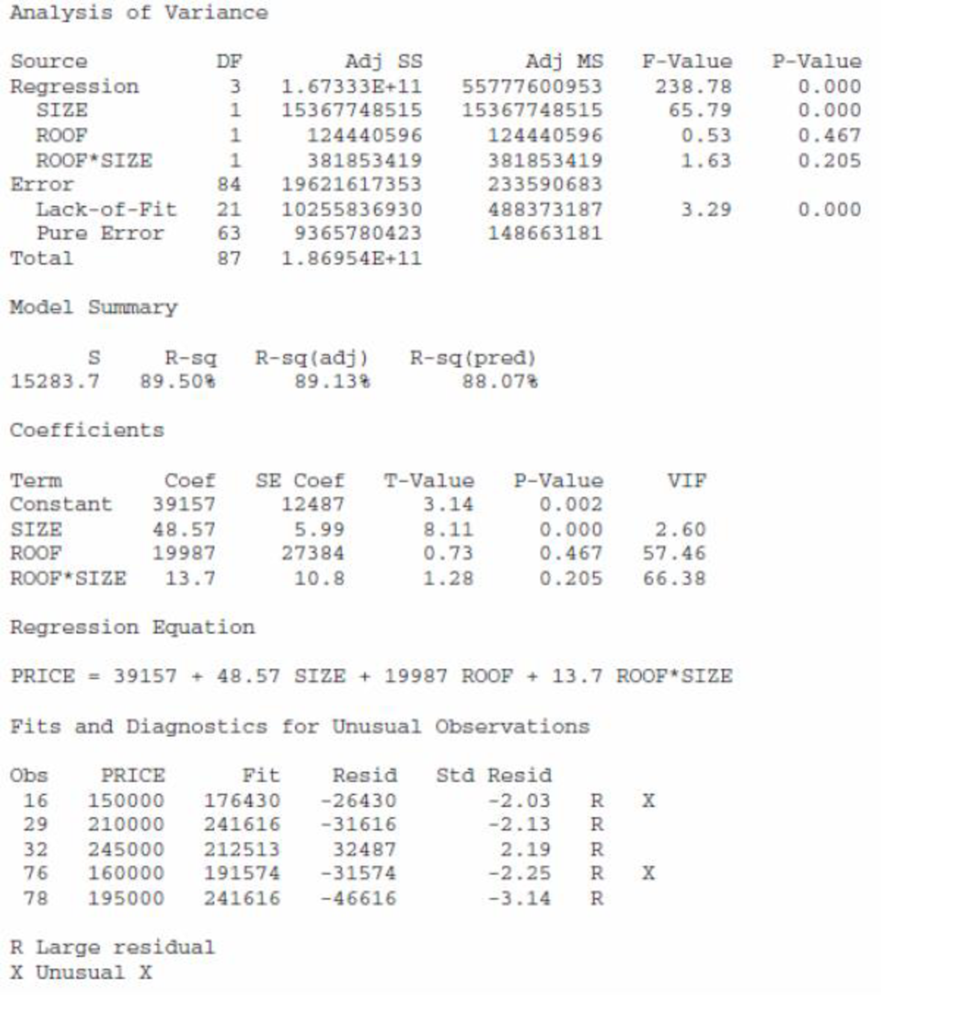
Want to see the full answer?
Check out a sample textbook solution
Chapter B Solutions
Introductory Statistics (10th Edition)
- A well-known company predominantly makes flat pack furniture for students. Variability with the automated machinery means the wood components are cut with a standard deviation in length of 0.45 mm. After they are cut the components are measured. If their length is more than 1.2 mm from the required length, the components are rejected. a) Calculate the percentage of components that get rejected. b) In a manufacturing run of 1000 units, how many are expected to be rejected? c) The company wishes to install more accurate equipment in order to reduce the rejection rate by one-half, using the same ±1.2mm rejection criterion. Calculate the maximum acceptable standard deviation of the new process.arrow_forward5. Let X and Y be independent random variables and let the superscripts denote symmetrization (recall Sect. 3.6). Show that (X + Y) X+ys.arrow_forward8. Suppose that the moments of the random variable X are constant, that is, suppose that EX" =c for all n ≥ 1, for some constant c. Find the distribution of X.arrow_forward
- 9. The concentration function of a random variable X is defined as Qx(h) = sup P(x ≤ X ≤x+h), h>0. Show that, if X and Y are independent random variables, then Qx+y (h) min{Qx(h). Qr (h)).arrow_forward10. Prove that, if (t)=1+0(12) as asf->> O is a characteristic function, then p = 1.arrow_forward9. The concentration function of a random variable X is defined as Qx(h) sup P(x ≤x≤x+h), h>0. (b) Is it true that Qx(ah) =aQx (h)?arrow_forward
- 3. Let X1, X2,..., X, be independent, Exp(1)-distributed random variables, and set V₁₁ = max Xk and W₁ = X₁+x+x+ Isk≤narrow_forward7. Consider the function (t)=(1+|t|)e, ER. (a) Prove that is a characteristic function. (b) Prove that the corresponding distribution is absolutely continuous. (c) Prove, departing from itself, that the distribution has finite mean and variance. (d) Prove, without computation, that the mean equals 0. (e) Compute the density.arrow_forward1. Show, by using characteristic, or moment generating functions, that if fx(x) = ½ex, -∞0 < x < ∞, then XY₁ - Y2, where Y₁ and Y2 are independent, exponentially distributed random variables.arrow_forward
- 1. Show, by using characteristic, or moment generating functions, that if 1 fx(x): x) = ½exarrow_forward1990) 02-02 50% mesob berceus +7 What's the probability of getting more than 1 head on 10 flips of a fair coin?arrow_forward9. The concentration function of a random variable X is defined as Qx(h) sup P(x≤x≤x+h), h>0. = x (a) Show that Qx+b(h) = Qx(h).arrow_forward
 Glencoe Algebra 1, Student Edition, 9780079039897...AlgebraISBN:9780079039897Author:CarterPublisher:McGraw Hill
Glencoe Algebra 1, Student Edition, 9780079039897...AlgebraISBN:9780079039897Author:CarterPublisher:McGraw Hill Holt Mcdougal Larson Pre-algebra: Student Edition...AlgebraISBN:9780547587776Author:HOLT MCDOUGALPublisher:HOLT MCDOUGAL
Holt Mcdougal Larson Pre-algebra: Student Edition...AlgebraISBN:9780547587776Author:HOLT MCDOUGALPublisher:HOLT MCDOUGAL Functions and Change: A Modeling Approach to Coll...AlgebraISBN:9781337111348Author:Bruce Crauder, Benny Evans, Alan NoellPublisher:Cengage Learning
Functions and Change: A Modeling Approach to Coll...AlgebraISBN:9781337111348Author:Bruce Crauder, Benny Evans, Alan NoellPublisher:Cengage Learning Big Ideas Math A Bridge To Success Algebra 1: Stu...AlgebraISBN:9781680331141Author:HOUGHTON MIFFLIN HARCOURTPublisher:Houghton Mifflin Harcourt
Big Ideas Math A Bridge To Success Algebra 1: Stu...AlgebraISBN:9781680331141Author:HOUGHTON MIFFLIN HARCOURTPublisher:Houghton Mifflin Harcourt



